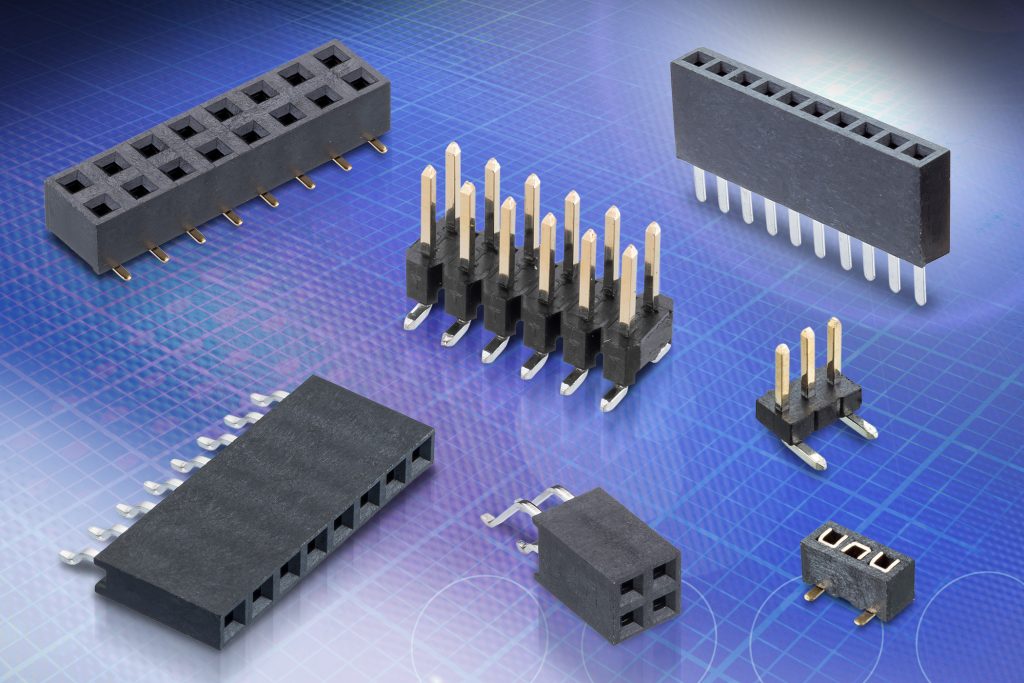In modern medical devices, PCB connectors play a crucial role as one of the key electronic components. Konnra will delve into the applications of PCB connectors in medical devices and the associated safety requirements. It aims to help readers understand how to select suitable PCB connectors to ensure the reliability and safety of their equipment.

What is a PCB Connector?
A PCB connector, simply put, is an electronic component primarily used to connect two or more circuit boards, allowing for signal or power transmission. In medical devices, the performance, stability, and safety of PCB connectors are of utmost importance. Medical equipment often transmits large amounts of sensitive biological and electrical signals, making reliable connections essential. Electronic connector companies focus on creating connectors that can meet these high standards for medical applications.
Applications of PCB Connectors in Medical Devices
1. Monitoring Equipment
Modern monitoring devices, such as electrocardiograms (ECG), blood pressure monitors, and respiratory monitors, require real-time, high-precision transmission of patient data. PCB connectors connect multiple circuit boards into an integrated system, allowing for high-speed signal transmission essential for monitoring equipment.
2. Diagnostic Imaging Equipment
Devices like ultrasound, CT, and MRI rely on PCB connectors to transmit imaging data, ensuring stable and clear output. Imaging equipment operates in high-frequency environments, meaning connectors need to handle high-frequency signals while minimizing signal loss and interference.
3. Portable Medical Devices
Portable devices, such as glucometers and portable ECGs, require miniaturization and lightweight components. PCB connectors used in these devices must be compact and lightweight while ensuring low power consumption to prolong battery life.
4. Therapeutic Equipment
Therapeutic equipment includes implantable devices like pacemakers and defibrillators. These devices directly impact patients, demanding high standards for connection stability and transmission efficiency to ensure accurate responses in critical moments.
Safety Requirements for PCB Connectors in Medical Devices
The safety of PCB connectors in medical devices directly affects patient health and well-being. Therefore, these connectors must meet a range of stringent safety standards, as provided by connector manufacturers who specialize in high-quality, industry-standard products.
1. High Reliability and Durability
Medical devices often operate 24/7, so PCB connectors must exhibit exceptional reliability. This reliability means the connectors won’t loosen or suffer contact issues over extended periods, ensuring device stability. Regarding durability, connectors must be heat and moisture-resistant to adapt to various environments.
2. Stable Electrical Performance
Medical devices require continuous, efficient power transmission, so PCB connectors must have superior electrical properties. Specifications such as contact resistance and insulation resistance should meet medical device standards and remain stable over time.
3. Interference Resistance
Medical environments may contain sources of electromagnetic interference, such as wireless signals from other electronic devices. PCB connectors should possess strong resistance to electromagnetic interference to prevent signal transmission from being affected.
4. High-Level Insulation
Medical devices may be in direct contact with patients or even implanted within their bodies, making insulation a critical factor. Inadequate insulation in connectors could pose leakage risks and potential safety hazards for patients. To address this, PCB connectors that comply with medical standards typically feature high insulation resistance, ensuring stable performance in complex environments.
5. Biocompatibility
PCB connectors in implantable medical devices must be biocompatible to avoid adverse reactions in the human body. Biocompatible connectors prevent material rejection issues, thus protecting patient health.
6. Miniaturization and Precision
As medical devices become more compact, PCB connectors are also becoming smaller while still maintaining effective contact and precision. Miniaturized designs contribute to device portability and help ensure secure connections with minimal failure rates.
How to Choose the Right PCB Connector?
1. Choose According to Device Type
Select connector types based on device purpose and function. For example, prioritize lightweight, compact connectors in portable devices, and choose high-frequency connectors for large imaging equipment to reduce signal interference.
2. Material Selection
The material of PCB connectors directly affects their lifespan and safety. Choosing high-quality, corrosion-resistant materials ensures connectors remain durable in high-humidity or special environments. For implantable devices, material biocompatibility is essential.
3. Testing and Certification
Choose certified PCB connectors that meet medical standards such as ISO 10993-1 (biocompatibility testing) and IEC 60601 (medical electrical safety standards). Products certified by electronic connector companies to these standards are more reliable and safe for use in medical settings.
4. Customization Needs
For specialized medical devices, consider custom PCB connectors designed to optimize shape, size, and performance per equipment requirements. Customized connectors can better match device needs and improve overall equipment performance.
Future Trends of PCB Connectors in Medical Devices
1. Intelligent Connectors
As medical devices evolve toward intelligent systems, smart connectors are likely to become widespread. Smart connectors can monitor their operational status, detect contact quality, reduce failure rates, and increase device reliability.
2. Eco-Friendly Materials
Future PCB connectors will likely focus on sustainability, using degradable or recyclable materials that align with environmental regulations, thus reducing environmental impact.
3. Miniaturization and High-Frequency Compatibility
With medical devices moving towards miniaturization, high-frequency, miniaturized PCB connectors are becoming a trend. High-frequency connectors better facilitate complex signal transmission, while miniaturized connectors increase device portability.
4. Enhanced Interference Resistance
With the advent of 5G technology, interference between devices may increase. As a result, future PCB connectors will feature stronger anti-interference capabilities to ensure stable signal transmission.
Through this article, we hope to provide a clear understanding of the applications and safety requirements of PCB connectors in medical devices. As essential components, PCB connectors must meet high safety standards, durability, and stability. Choosing high-quality connectors that meet industry standards, produced by reputable connector manufacturers, ensures that medical devices operate effectively and safely, offering patients a secure treatment experience.










